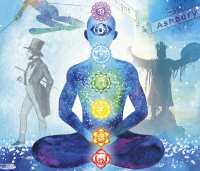
What if there is, fundamentally, nothing to change or fix in ourselves?
By Martin Wells
Author of Sitting in the Stillness
An interesting story of human consciousness written with an intelligent, clear view of our essential nature. An entertaining thought provoking read, the author has created a helpful tool for those seeking to understand the mysterious nature of consciousness and the oneness of life itself.
J.M.Harrison, award winning author
How often do you meet someone who influences you for the rest of your life? The tall The French psychiatrist stood up slowly to deliver his talk on meditation at the Royal college of psychiatrists in London. He had no PowerPoint presentation and no notes. There were very long pauses between statements. In a thick accent he began ‘In order to be a psychiatrist you need to completely forget you are a psychiatrist!’
I was intrigued. What did he mean?
This was followed after a minutes silence by another hard hitting statement:
‘You are not your story..be true to who you are!’
This was to be the beginning of an amazing relationship - and Dr Jean-Marc Mantel became my mentor and spiritual teacher over the next few years, turning my view of myself and my work as a psychotherapist on its head. Even my view of mindfulness and meditation changed radically.
The conversations I started to have with patients and colleagues became more about 'being’ rather than ‘doing’…..more about freedom than change. My clients were also wanting to know their true nature. The momentum started to build, example after example, of people wanting to know their true nature. A conversation with a client became an article and then many further meetings with other clients and colleagues became a book.
‘Sitting in the Stillness’ is not a therapy book, a self help book or a book about how to practice mindfulness. Nor is it like the majority of psychotherapy and mindfulness books that begin with the notion that the person needs to change, get better or develop in some way. This book offers a radically different perspective. Namely that the task of therapy and the essence of mindfulness is to remind people of their true nature – of the being before the influence of the personal story.
Many early attachment difficulties and wounds leave us with a story: I’m a bad person, not good enough, not loveable. I don’t belong’. As Jean-Marc says we are not our stories, our traumas or defences.
At the end of Jane Eyre, Jane says to Rochester “You are not your wound”…. “I love you not your wound”.
This book does not suggest we ignore our wounds but to see them as unique keys to liberation, as encouragements to remember who we really are and free ourselves from the personal story. A story is a fiction and as such not who we are but we tend to believe our stories and as such they become a beacon which guides our life.
There are many different stories in the book: some from the therapy room told by the author, some told by the clients and colleagues themselves. But all of them have a similar theme:
- common stories of relationships in families and with friends and colleagues - and how the personal narrative plays out over and over again often leading to a breakdown or crisis.
- stories of stripping way; of false beliefs and illusions about ourselves.
- descriptions not of healing the wound, but no longer identifying with it, bringing an end to the search.
- stories of realisation, of seeing the story as a guiding fiction and bringing a new found clarity.
The therapist’s gift to the patient is not as expert or healer but simply to have seen his own story as illusion, to be free of an agenda or expectation and in this way to sit in a stillness that invites the client, and hopefully the reader into theirs.
Only a few weeks after Jean-Marc’s words at the end of a psychotherapy assessment meeting the patient, that I’m meeting for the first time, says: (quote from the book).
‘Malcolm had been sitting in my office for almost two hours as we talked about his suitability for psychotherapy. After he had given me a full account of his life he looked at me, laughed and said, “Well that’s the story of me but I still don’t know who I am!”’.
Although he laughed, his words came as a shock. This was exactly the same question I had recently been asking myself after twenty years as a psychotherapist. A question that had turned my approach to psychotherapy and mindfulness upside down and made me enquire more deeply into the story of me and my true identity. It was as if I no longer knew who I was either.’
Many of the stories describe how life keeps prompting the question of what is our true nature - the crisis or breakdown allowing a breakthrough of the true self. For example a profound crisis forced my colleague, Alice, to question who she really was. After months of struggle, a deep review of her life and some profound realisations she wrote to me: (quoted from the book):
“In writing this, I asked my husband whether he thought I had changed since my "breakdown". He said that he didn't think that I was different, but rather he felt that I was "more me". This resonates with me; I feel more present, more connected and more authentic than I ever have as an adult.”
CLICK TO READ SITTING IN THE STILLNESS NOW
YOU MAY ALSO ENJOY
Categories:
0 comments on this article












